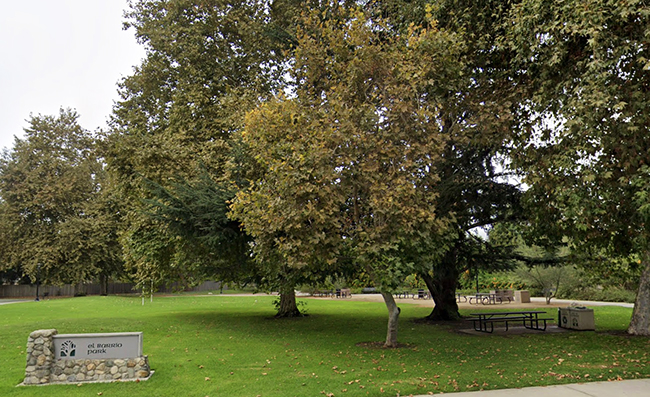Metro Gold Line extension needs to fit Claremont
by Ray and Barbara Fowler
We appreciate the many hours devoted by many people to the study of extending the Metro Gold Line trains between Azusa and Montclair along the early train lines that bisect the older core hearts of Glendora, San Dimas, north Pomona, La Verne and Claremont.
While many smaller safety and noise problems have been solved or somewhat moderated, the big picture needs analysis. Its convenience and profit for some will be a cost for others, and the stations will be a determining factor in the future appearance, values, crowding, noise, planning, tax costs and Village unity in this string of smaller foothill cities. We came from the recent meeting in La Verne wanting to evaluate these crucial proposals:
1. Gold Line trains run 10 trains per hour, all day and evening. These 10-per- hour intersection stoppages will be added to the longer stoppages now required by current freight and Metrolink trains. All north/south intersections will be closed tightly, with a moderated signal noise as the protective arms descend (not as they rise), stopping cars safely on both sides.
Anyone traveling in South Pasadena or other cities served by the Gold Line knows the north-south streets back up considerably, depending on the traffic and time of day, just for these briefer but more frequent closures.
2. For commuters, a massive 3-story parking structure will house 1000 commuters’ cars, stretching along the south side of First Street, east of College Avenue. These cars will arrive and leave the structure through the residential streets daily, each morning and evening. Those who use Metrolink already use the outdoor tree-filled parking lot there; Gold Line commuters will be added. One thousand cars parked in one location affect all town traffic fundamentally. Concurrently, this historic core area and the state has new bike rights and rules, which neither bikers nor car drivers have learned or practiced.
a. Main collector streets throughout this same section of Claremont are now striped for bicycle lanes, which reduced the number of automobile lanes on some streets. Which further residential and business streets will have to become collector streets?
b. State law now changes speed limits on sections of streets according to speeds people actually drive (except by schools). Every time a street improvement is made, the city must retest and change the speed limit accordingly, normally raising it. How will adding 1000 cars a day to First Street, both from and through residential and business areas, speed up that process?
c. Bicycles on all streets in the core area of town now have equal rights as cars to the main driving lanes (not just the bicycle lanes), regardless of the speed they travel or whether they have dogs on leashes, children on little trailers, are wearing helmets, or have bicycle lights or visible clothing at night. If you value life, please think about this seriously— all these concerns are occurring already since the bicycle rules changed.
3. The plan also suggests a retail business building at the southeast corner of First and College, which is not related to the needs of people using the parking structure.
With busy car, bicycle and pedestrian activity at The Colleges to the north and the CUC center to the east—and with the dozens of small businesses in Villages East and West needing customers rather than competition to thrive—this feels like questionable financial and safety planning, especially with Courier Place and Oakmont school so nearby. This currently stable residential neighborhood could become questionable with the unknown future traffic-causing businesses permitted by the mixed-used zoning..
The Colleges are largely residential not commuter, our businesses and institutions are encouraged to hire locally to the extent possible, and many incomes are going to stay lower for some time. So perhaps cooperation among these eastern Foothill cities to strengthen Metrolink for long commutes and build smaller, more functional local regional transportation to support their own—and each other’s—tax-generating entities might be more productive economically than to build a multi-billion dollar continuation of a train expansion. The latter easily destroys the ambience and unique charm of older small-town centers while hoping (without proof) to attract tourists and while improving convenience for a minority of people going elsewhere.
If anyone knows of professional studies or discussions, and large enough grants for, viable alternative suggestions to this Gold Line segment, we would appreciate your writing the COURIER about them before the Gold Line plans
Meanwhile, all public comments received about the Metro Gold Line received by October 5—this Friday—must be considered before the EIR is completed.
Plans have been much improved by those already giving input and perhaps more can be done for the long-term viability of our area and town.
If nothing more, we ask that the parking structure be a creative, appropriate design rather than a big bulky industrial-shaped rectangle. LEEDS but historically designed would be something that could and should be done—it should fit Claremont history, nature and College Avenue matching the setback and greenery to the structure on the west.
Comments should go to:
Metro Gold Line Foothill Extension Construction Authority, 406 E. Huntington Dr., Suite 202, Monrovia, CA, 91016 Attn: Lisa Levy Buch, or by email to llevybuch@foothillextension. org.








0 Comments